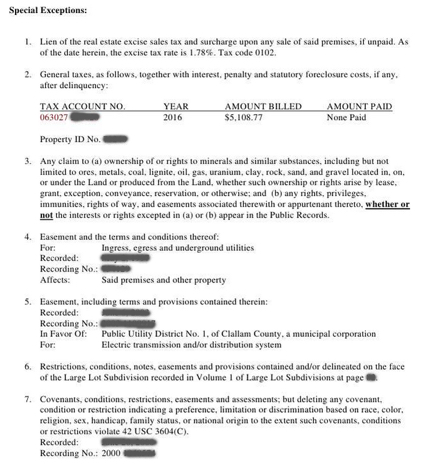You will receive a Preliminary Title Report from your title company shortly after you and the seller reached an agreement for the purchase of your new home. The Preliminary Title Report is the first important document you will receive when you buy a home. It is a thick document, which has several key sections, and being able to read a Preliminary Title Report is very important. Today I’ll tell you how to read it.
Preliminary Title Report
The first section of the title report will tell you who is vested in title, i.e. who owns the property legally, and it will also show you as the proposed insured. Why do you need title insurance? A title company will insure that the title you get is free and clear of all mortgages (except your own new mortgage), liens of any kind (labor liens, mechanic’s liens, federal tax liens), judgments against the seller, and any other clouds on the title. The seller actually pays the one-time premium for your title insurance, but if you get a loan, your mortgage company will also require a mortgage title policy, and you will pay for that.
Preliminary Title Report Special Exceptions
The preliminary title report shows what is on the record now when your transaction is pending, but when your transaction closes, you will get a final title report showing that you are getting a clear title. The most important section of your preliminary title report is called “Special Exceptions,” and this is where you will find everything that is recorded against this real estate, and any related potential liens or title issues, including the list above.
If there are Covenants (CC&Rs) on the property, you’ll find mention of that in the Special Exceptions of your preliminary title report. If there is an easement running over the property, it will show up here. Normally, you will get a copy of all related documents attached to your preliminary title report, so that’s why this is so important. You should read through the title report and all the attached documents. You may need help from your Buyer’s Agent interpreting the covenants or the preliminary title report, but you can always get title answers directly from your title company.
One important thing you should know is that if a neighbor has or is making a claim to part of the property by way of adverse possession, or a claim to access to his property by way of a prescriptive easement, those potential legal claims do not show up on a preliminary title report.
And now you know how to read a preliminary title report.
Last Updated on March 17, 2016 by Chuck Marunde




























